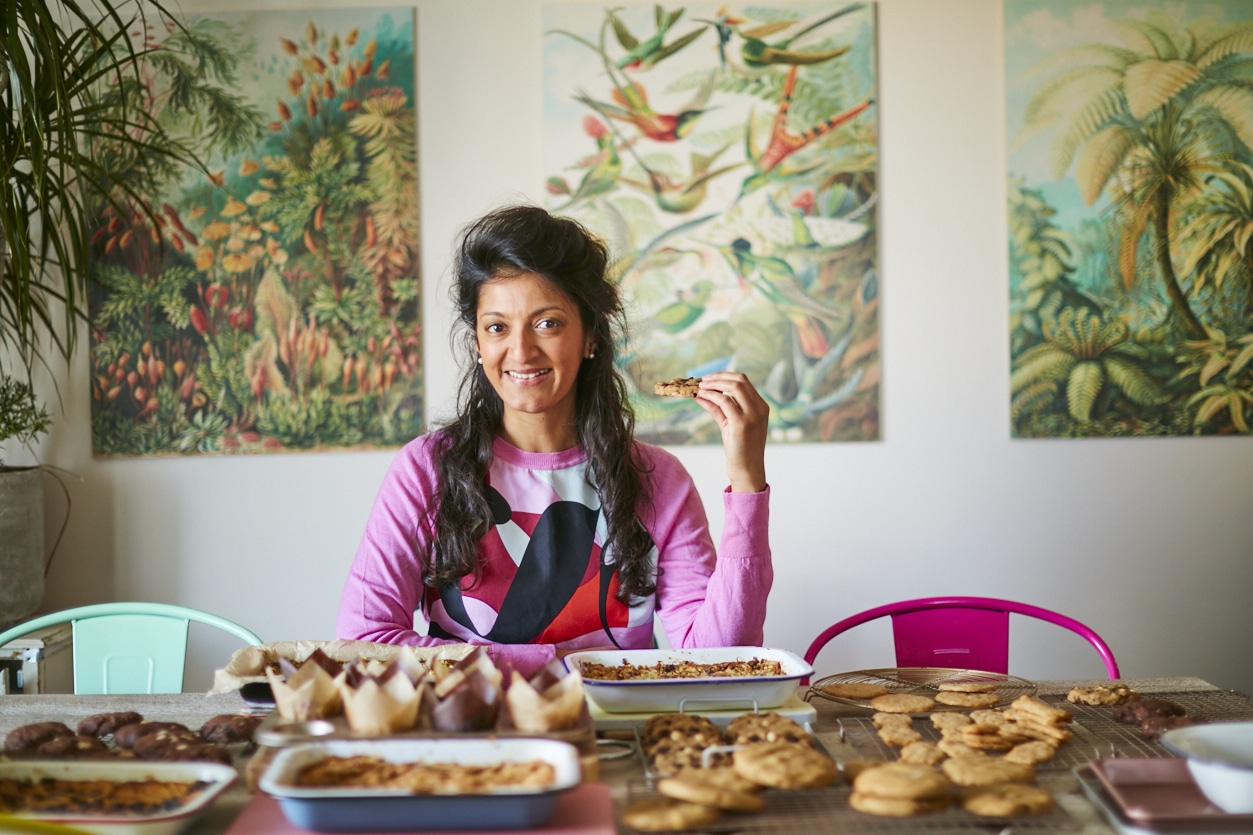Wicked Leeks (WL): What made you want to write this book with travel and food at the heart? Was there a conversation or meal that inspired you?
Rukmini Iyer (RI): I was chatting with my parents about the train journeys they used to take in India between Kolkata (formerly Calcutta) and Chennai (formerly Madras) – a journey of 24 hours. My mum was reminiscing about the food they’d eat – amazing train picnics packed by my grandmother, stopping for dinner at station restaurants on the way. It sounded really fun and romantic, and the more we chatted the more I thought that the train to connect the two regions would be a lovely motif for a book about the food from my parents’ regions, West Bengal and South India.
WL: What links do you see between traveling by train to see a country and exploring its different food cultures?
RI: When I took the journey on the Coromandel Express with my parents on a research trip, I loved how the food on offer on the train (sold by vendors who walk up and down the carriages, offering “hot hot chai! samosas! tomato soup!”), would have regional additions depending on where we were. Mishti doi, a popular Bengali sweetened yogurt was on offer as we pulled out of Kolkata, then South Indian classics like vadas (crisp lentil fritters), idlis (steamed rice cakes) or dosas (fermented rice and lentil pancakes) as you approach Chennai. As you’re travelling through Andra Pradesh, you’d get spiced cashew nuts and peanuts, and amsath, or mango leather. When my parents used to take the train years back, you could get a full South Indian thali meal in the dining compartment. Nowadays, you can order a full meal online from any station restaurant along the journey, and it’ll be delivered to your seat, a wonderful way to explore the food of the different regions.
WL: How did the different regions of India that you visited differ in terms of flavour, dishes and ingredients?
RI: When I asked my mum (who is from Kolkata) this question, her pithy answer was “tomatoes and potatoes! Bengalis put them in everything!” Which is a fair representation – Bengali food is tomato and potato heavy, and as a region, they’re obsessed with fish. You also have the unique Bengali five spice mix: panch phoron, a mixture of nigella, fenugreek, fennel, black cumin and black mustard seeds, which you won’t find in any other region of India. It’s wonderfully aromatic – I love it in the regional classic chechki, made with potatoes, cauliflower and peas. Bengalis also cook with mustard oil, which you absolutely wouldn’t do in South India. But I can’t generalise as much about South Indian food as the kind I’m used to is very specific to how my Dad’s South Indian family cook. Think lovely vegetarian stir fries, flavoured with mustard seeds, curry leaves and chilli, often stirred through with fresh coconut. South Indian classics like dosas are made with a mixture of soaked, fermented rice and lentils, blitzed and made into paper-thin crepes, and the snacks are next level – my grandmother would make incredible shapes from chickpea and rice flour dough, which are then fried until crisp – perfect for an after school or work snack.
WL: Why do you think this understanding of food regionality is exciting or important?
RI: India is such a massive country with so many types of regional cooking that will vary from state to state, and within that from family to family. It’s impossible for me to generalise and think of Indian cooking as a generic whole when there are so many exciting, unique regional dishes and styles of cooking.
WL: Which region did you like best in terms of food?
RI: I’d be hard pressed to favour Bengali over South Indian cooking (it’d be like playing favourites between my parents!). Like anything, it depends what you’re in the mood for. If I want rich, indulgent food I’d turn to a Bengali meal, with green pea kachori (stuffed fried bread) and aloo dum (potatoes cooked with tomatoes). If I’m feeling under the weather, the nicest thing I can think of is my South Indian family recipe for molagu rasam, an addictive tamarind and black pepper broth, a wonderful remedy for a cold.
WL: What do you hope people will learn about India from India Express?
RI: I hope people who aren’t as familiar with Indian regional cookery will see there’s more to Indian food than kormas or jalfrezis (nothing wrong with them, but they were invented by cooks in Britain in the 70s). I’d hope to show that you can make fun, fresh Indian food on a weeknight, which is how I had it growing up, without needing to spend hours over spice pastes or pre-made sauces. The one pan or one tin recipes in India Express are an absolute go-to for me – while my partner does bath and bedtime for the baby, I can stick a rice dish in the microwave and a chickpea curry on the hob, and 30 minutes later we’ve got a lovely, home-cooked meal to sit down with.
WL: Where do you shop for your spices and other store cupboard staples for your Indian cooking?
RI: Just at the supermarket usually. Luckily our local supermarkets have great world food aisles where I can pick up any slightly more unusual ingredients like black chickpeas or tinned mango. Otherwise there are great independent spice shops online like Spice Mountain or The Spicery with fast delivery. I will buy 10kg bags of Tilda basmati rice from whoever will deliver.
WL: What is your favourite recipe from the book?
RI: The chilli cheese parathas are definitely up there. But my current favourite combination is the one-tin roasted cauliflower with mustard, chilli and lemon, the prawn malai curry and my grandmother Thathi’s coconut rice.
India Express by Rukmini Iyer (£22, Square Peg) is out now.









0 Comments